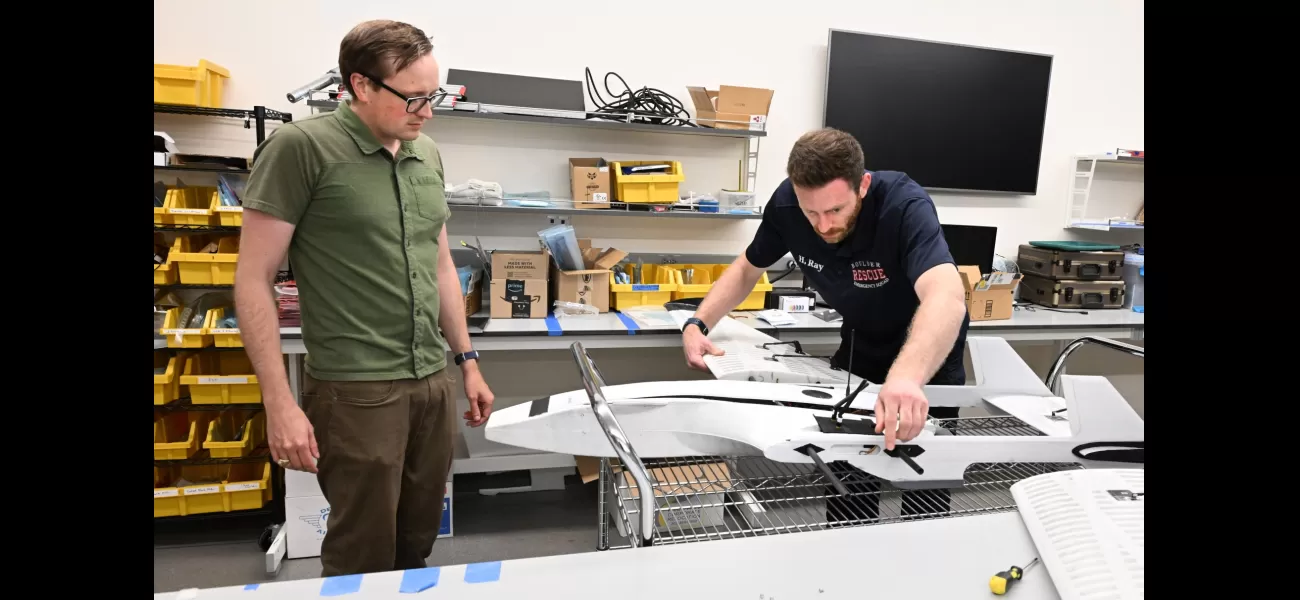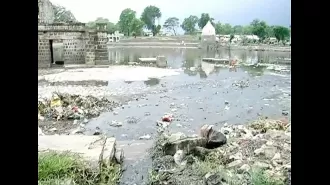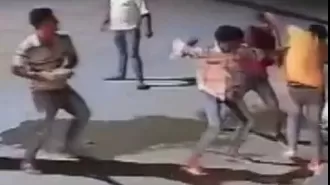CU Boulder and Boulder Emergency Squad are studying the effectiveness of using drones with AI technology for search and rescue operations.
Drones can use information provided by rescuers to aid in locating people or surveying areas, according to the study.
July 6th 2024.

The University of Colorado Boulder's Ann and H.J. Smead Engineering Sciences department has joined forces with the Boulder Emergency Squad to explore the potential of AI-enabled drones in search and rescue missions. This groundbreaking research allows rescue teams to communicate with drones, which can then autonomously assist in scouting areas or locating individuals in need.
Hunter Ray, who is both a volunteer rescuer with the Boulder Emergency Squad and a doctoral student in aerospace engineering at CU Boulder, is eagerly participating in this upcoming research. He believes that the use of AI drones could greatly benefit modern-day public safety.
In Ray's words, "We've been using drones on our team since 2016, so we're very familiar with how to incorporate them into our operations. However, when we have one drone in the field, it often requires two or three people to manage it - piloting, charging, and coordinating its movements with the rest of the team and the incident at hand." The Boulder Emergency Squad, which Ray describes as "the swiss-army knife of law enforcement agencies," is a non-profit volunteer technical search and rescue team that serves Boulder County and is largely funded by the sheriff's office.
According to Ray, search and rescue missions involve many moving parts, and delegating tasks to AI drones could provide some much-needed assistance. "It's like delegating responsibility to the aircraft itself, freeing up the user to charge batteries, communicate on the radio, and handle higher-level tasks," explains Ray.
In Ray's view, operating the drone controls can be challenging while also focusing on finding a missing person. "That's where this new project comes in - it elevates the decision-making process for our operators. Instead of giving them simple commands like 'go here' or 'move forward,' we can provide them with the overall mission and ask them to search for specific information in the environment," he clarifies.
Ray emphasizes that there will always be a person at the center of the drone system, and the project's goal is not to replace them. "There's a misconception that autonomy means eliminating the human element. Just like there's no such thing as an autonomous firefighter or police officer, there won't be a fully autonomous system. It's all about working together with people in public safety, especially in uncertain and dynamic environments," he explains.
Chief Andy Amalfitano of the Boulder Emergency Squad is confident that this technology will not only save lives but also decrease the time spent searching for missing individuals. "When we say 'we save lives,' it may sound dramatic. But in our case, saving a life means finding someone before they reach a critical point where they may not make it. So even though we may not technically save their life in that moment, we're reducing harm by finding them sooner," explains Amalfitano.
Nisar Ahmed, an associate professor at CU Aerospace, is thrilled about the potential of this project and its impact on public safety in the future. "People like Hunter, who are actively involved in this work, are crucial to us as researchers. They provide valuable insights that allow us to explore different ways of using this technology in other areas," says Ahmed. "It's truly exciting to see this project take flight."
Hunter Ray, who is both a volunteer rescuer with the Boulder Emergency Squad and a doctoral student in aerospace engineering at CU Boulder, is eagerly participating in this upcoming research. He believes that the use of AI drones could greatly benefit modern-day public safety.
In Ray's words, "We've been using drones on our team since 2016, so we're very familiar with how to incorporate them into our operations. However, when we have one drone in the field, it often requires two or three people to manage it - piloting, charging, and coordinating its movements with the rest of the team and the incident at hand." The Boulder Emergency Squad, which Ray describes as "the swiss-army knife of law enforcement agencies," is a non-profit volunteer technical search and rescue team that serves Boulder County and is largely funded by the sheriff's office.
According to Ray, search and rescue missions involve many moving parts, and delegating tasks to AI drones could provide some much-needed assistance. "It's like delegating responsibility to the aircraft itself, freeing up the user to charge batteries, communicate on the radio, and handle higher-level tasks," explains Ray.
In Ray's view, operating the drone controls can be challenging while also focusing on finding a missing person. "That's where this new project comes in - it elevates the decision-making process for our operators. Instead of giving them simple commands like 'go here' or 'move forward,' we can provide them with the overall mission and ask them to search for specific information in the environment," he clarifies.
Ray emphasizes that there will always be a person at the center of the drone system, and the project's goal is not to replace them. "There's a misconception that autonomy means eliminating the human element. Just like there's no such thing as an autonomous firefighter or police officer, there won't be a fully autonomous system. It's all about working together with people in public safety, especially in uncertain and dynamic environments," he explains.
Chief Andy Amalfitano of the Boulder Emergency Squad is confident that this technology will not only save lives but also decrease the time spent searching for missing individuals. "When we say 'we save lives,' it may sound dramatic. But in our case, saving a life means finding someone before they reach a critical point where they may not make it. So even though we may not technically save their life in that moment, we're reducing harm by finding them sooner," explains Amalfitano.
Nisar Ahmed, an associate professor at CU Aerospace, is thrilled about the potential of this project and its impact on public safety in the future. "People like Hunter, who are actively involved in this work, are crucial to us as researchers. They provide valuable insights that allow us to explore different ways of using this technology in other areas," says Ahmed. "It's truly exciting to see this project take flight."
[This article has been trending online recently and has been generated with AI. Your feed is customized.]
[Generative AI is experimental.]
0
0
Submit Comment





